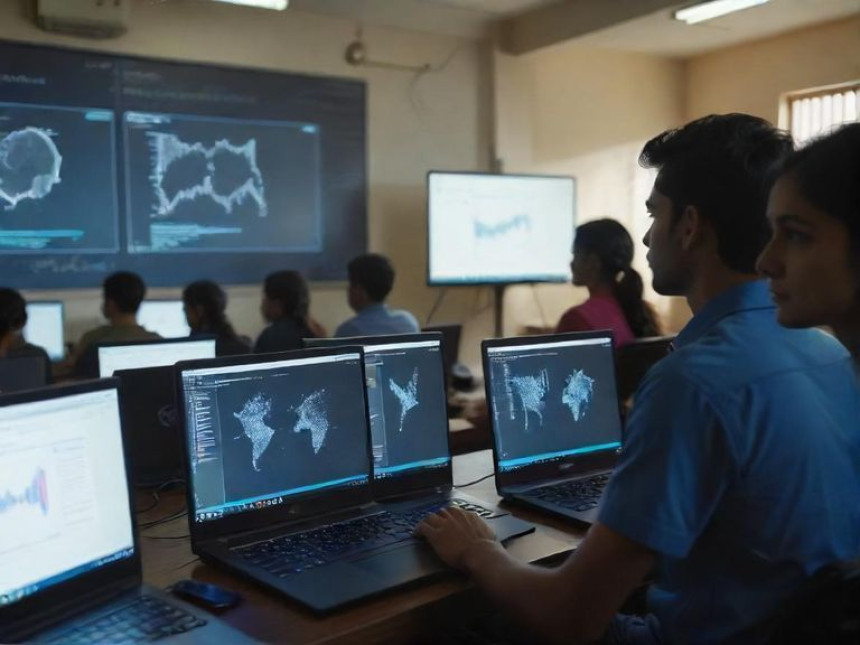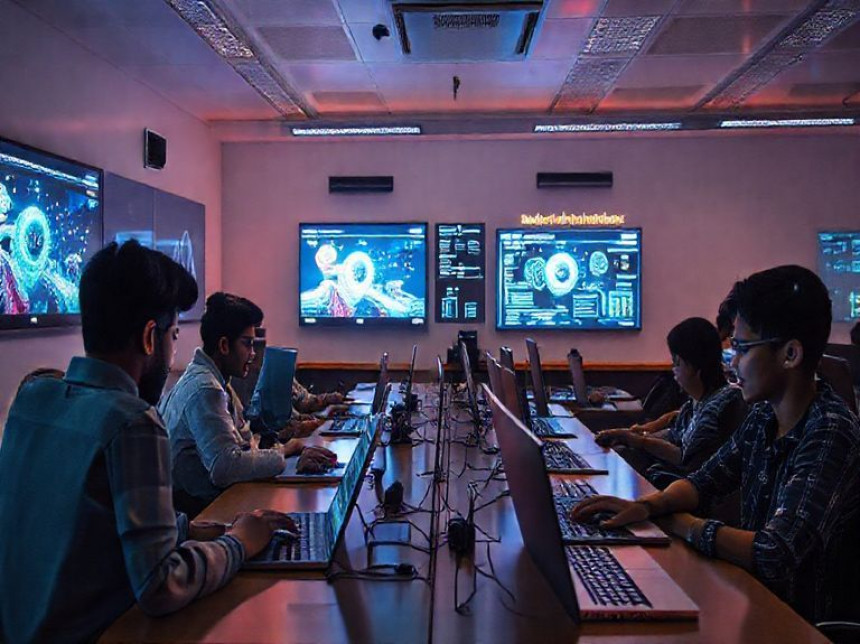
Workflow: Fine-Tuning Basics for Custom Models with Python
Workflow: Fine-Tuning Basics for Custom Models with Python. Get practical lessons and hands-on examples at AIComputerClasses in Indore to master artificial intelligence (AI) skills quickly. Follow practical exercises and tool-based examples to learn rapidly. This article from AIComputerClasses Indore breaks down workflow: fine-tuning basics for custom models with python into actionable steps. Includes references to tools like ChatGPT, Power BI, Excel, Figma, or Python where appropriate.
🎓 Workflow: Fine-Tuning Basics for Custom Models with PythonArtificial Intelligence (AI) is evolving faster than ever, and one of the most powerful techniques driving its progress in 2025 is fine-tuning. Fine-tuning allows you to take a pre-trained model and adapt it to your specific needs — saving both time and resources. Whether you’re building chatbots, sentiment analyzers, or image classifiers, understanding fine-tuning with Python is a must-have skill for any aspiring AI professional.
At AI Computer Classes, Indore, we help students not just learn Python but master the workflow of fine-tuning custom models hands-on. From importing pre-trained transformers to adjusting hyperparameters, this guide will walk you through the essential workflow every learner should know. 🚀
Fine-tuning refers to the process of adapting a pre-trained AI model to perform better on a specific dataset or domain.
Why Fine-Tuning Matters:- Saves computation and training time.
- Uses existing large datasets effectively.
- Provides better accuracy for niche tasks.
- Reduces cost compared to training from scratch.
For example, you can take a pre-trained BERT model and fine-tune it for sentiment analysis on customer reviews — instead of training an entire language model from zero.
💡 Tip: Pre-trained models act like a “foundation,” while fine-tuning customizes them to your use case.
Here’s the typical step-by-step workflow for fine-tuning using Python and libraries like Transformers, PyTorch, or TensorFlow.
1️⃣ Choose a Pre-Trained ModelStart by selecting a base model that matches your task.
Examples:
- NLP Tasks → bert-base-uncased, gpt-2, t5-small
- Vision Tasks → resnet50, vit-base-patch16-224
You’ll need a labeled dataset to fine-tune your model. You can use:
- Hugging Face datasets
- CSV data
- Custom datasets created in Excel or SQL
Example (Python):
from datasets import load_dataset
dataset = load_dataset("imdb")
3️⃣ Tokenize DataFor text-based models, tokenize the input for model understanding.
from transformers import AutoTokenizer
tokenizer = AutoTokenizer.from_pretrained("bert-base-uncased")
tokenized_data = dataset.map(lambda x: tokenizer(x["text"], truncation=True, padding="max_length"), batched=True)
4️⃣ Define Model ArchitectureLoad your chosen model:
from transformers import AutoModelForSequenceClassification
model = AutoModelForSequenceClassification.from_pretrained("bert-base-uncased", num_labels=2)
5️⃣ Configure TrainingSet hyperparameters like learning rate, batch size, and epochs.
from transformers import TrainingArguments
training_args = TrainingArguments(
output_dir="./results",
evaluation_strategy="epoch",
learning_rate=2e-5,
per_device_train_batch_size=16,
num_train_epochs=3
)
💡 Learn from Experts at AI Computer Classes – Indore!
Boost your AI career with practical, hands-on training in Python, AI, and Data Science.
👉 Join our latest batch now at AI Computer Classes
📍 Located in Old Palasia, Indore
🧰 Training and EvaluationOnce your setup is ready, it’s time to train your model:
from transformers import Trainer
trainer = Trainer(
model=model,
args=training_args,
train_dataset=tokenized_data["train"],
eval_dataset=tokenized_data["test"]
)
trainer.train()
After Training:- Save your fine-tuned model.
- Evaluate its performance using metrics like accuracy, F1-score, or loss.
trainer.evaluate()
trainer.save_model("./fine_tuned_model")
🔍 Example Use Cases of Fine-Tuned ModelsDomainExampleBenefitFinanceFraud detection model fine-tuned on transaction dataHigher accuracy, fewer false positivesHealthcareSymptom prediction from patient notesDomain-specific insightsE-commerceReview sentiment classificationBetter product recommendationsEducationAutomated essay gradingSaves teacher time
Fine-tuning gives AI models domain expertise, transforming generic systems into industry-ready solutions.
💡 Learn from Experts at AI Computer Classes – Indore!
Master fine-tuning workflows, transformers, and deep learning concepts with Python practicals and projects.
👉 Join AI Computer Classes – Indore for real-world learning that employers value!
🧠 Common Challenges in Fine-TuningEven advanced learners face issues like:
- Overfitting – model learns training data too well but fails on unseen data.
- Data imbalance – some classes have too few examples.
- Hyperparameter sensitivity – small changes can cause major performance shifts.
- Use regularization and dropout layers.
- Apply data augmentation techniques.
- Perform cross-validation for balanced evaluation.
- Python – Core programming language.
- Transformers (Hugging Face) – Pre-trained models and tokenizers.
- PyTorch / TensorFlow – Training and deep learning backbones.
- Google Colab / Jupyter Notebook – Interactive coding environments.
- Power BI or Excel – For analyzing dataset insights before training.
At AI Computer Classes, Indore, we make sure students gain exposure to each of these tools through guided labs and assignments.
💡 Boost Your Skills with AI Computer Classes – Indore!
Learn to implement fine-tuning workflows with Python, TensorFlow, and Hugging Face.
👉 Enroll today and build your own AI models!
📞 Call: +91 91113 33255 | 🌐 aicomputerclasses.com
🧭 ConclusionFine-tuning is one of the most efficient and practical ways to build custom AI models that perform better, faster, and smarter. It bridges the gap between generic AI and domain-specific intelligence.
At AI Computer Classes, Indore, we help students develop end-to-end AI solutions — from dataset preprocessing to deploying fine-tuned models in real-world projects.
If you’re serious about a career in Artificial Intelligence or Machine Learning, now’s the time to start your fine-tuning journey with Python and transform your learning into professional success. 🌟
📞 Contact AI Computer Classes – Indore
✉ Email: hello@aicomputerclasses.com
📱 Phone: +91 91113 33255
📍 Address: 208, Captain CS Naidu Building, near Greater Kailash Road, opposite School of Excellence For Eye, Opposite Grotto Arcade, Old Palasia, Indore, Madhya Pradesh 452018
🌐 Website: www.aicomputerclasses.com




Complete Guide: Make Dynamic Presentations with Slide Masters
Complete Guide: Make Dynamic Presentations with Slide Masters. Get practical lessons and h...
